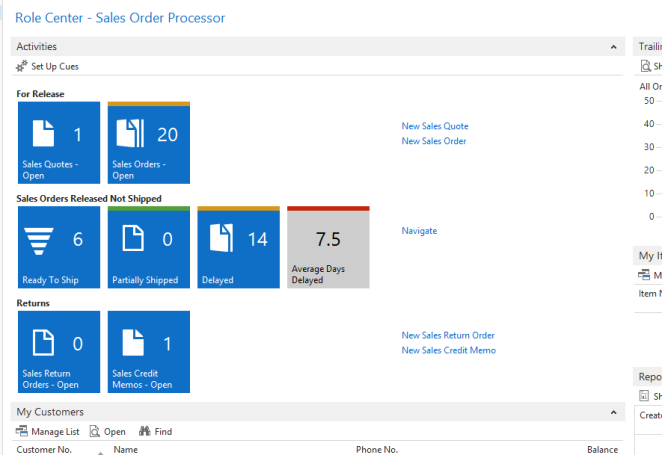What is new in Dynamics NAV 2013 R2 for Reporting
Biggest News, support for RDLC 2010 and Visual Studio 2012
1. ResetPageNumber on groups. With this we can now finally do page x of z when i.e. printing multiple invoices, something which was impossible to do in NAV 2009 and NAV 2013. With ResetPageNumber on groups we can also do Transfooter and Transheader much more elegant. If you attended my presentations at Directions EMEA in Vienna you saw how I did this, and I promise to blog about how this in done in R2 soon.
2. Export to XLSX and DOCX and not the old XLS and DOC format introduced around 16 years ago in Office 97.
3. Possible to make expression which can run only when render is interactive, i.e. Report Preview and not show if not interactive i.e. Print Layout, PDF and Excel. This could be very useful if you want something shown only in Report Viewer and not PDF or vice versa.
4.Create expressions that calculate an aggregate of an aggregate For example, in a cell in the row group header that is associated with a group based on year, you can calculate the average monthly sales for year by using the expression =Avg(Sum(Fields!Sales.Value,”Month”),”Year”). This is cool, but remember that you should not pollute the dataset, so if this only value you need, you should do this calculation in NAV.
5. Support for Report Builder, yes now we have a free editor for RDLC reports, so we do not have to do workarounds to get Visual Studio Express to work with reports in NAV. Report Builder has a few limitations, i.e. we do not have support for Document Outline and my best friend in Visual Studio the Layout Toolbar is very basic in Report Builder. So if you are experienced RDLC report designer you will probably prefer to work in Visual Studio 2012 Pro. If you on the other hand need to make a small change in the customers environment, Report Builder is the perfect solution.
6. Support for Sparklines, Databars, Indicators and Maps, all great demo features so expect in the future to find demo reports.
7. Here is one of my favorites. Support for opening reports in either Print Preview and Print Layout. In Print Layout we can see how the reports will look when printed. This is especially useful for document reports which usually are in Preview mode. And when in Preview the PrintLayout button is disabled, leaving the user unable to see how this report looks on paper. Also it makes no sense to show document reports in an Interactive mode when they have no interactive features. Opening reports is also faster in Print Layout, so if you are running large reports, try to run them in PrintLayout mode, and see how much faster they are. This is configured on each individual report.
8. Roollback to Security model in Report Viewer 2008. I have unfortunately not had the change to test this, but it should make large reports run much more smoothly compared to NAV 2013. The <NetFx40_LegacySecurityPolicy> setting in the Microsoft.Dynamics.Nav.Client.exe.config in the RTC client folder is default configured to use the old securtity model. You can read more about this here:http://msdn.microsoft.com/en-us/library/dd409253.aspx
9. Support for writing vertically textboxes in a 270 angle. In VS 2008 and 2010 we only had support for vertical textboxes in a 90 angle. Not the most exciting feature, but maybe useful for you.
10. Orphan static rows are now truly deleted when you decide to delete a group, and the group row are also moved to correct indention level. In Visual 2010 this had driven me crazy many times, deleting a group was not possible, since it meant that I had to recreate the tablix from scratch since there was no way of deleting these orphan static rows from the UI. Microsoft thanks for fixing this in VS 2012, but why have this not been fixed in VS 2010???
11. UserID converted to NAV UserID. When Printing reports from the WebClient or NAV Server it will be the WebServer UserID or NAV Server UserID printed on the report. Since pretty much all standard reports are using the “User!UserID” built in UserID from Visual Studio, Microsoft decided to automatically to convert this to the NAV UserID. It’s not even shown in the dataset, so does not polute each line, as it would have done if we used the User as column in the dataset. Going forward best practice will be to use the built in “User!UserID” in Visual Studio.
12. Printer Selection is now respected when in Print Preview. in NAV 2013 Printer Selections was only supported when printing from Request Page.
13. And then of course all the small new additions in Visual Studio 2012 that I have not discovered yet. 
With NAV 2013 R2 the RDLC reports now feels much more solid, so next thing is to get the NAV standard reports to look great and all outgoing document reports to look the same, so it easy for us partners to make changes to these, without needing to reinvent the wheel each time. Overall you should really look forward to do RDLC reports in NAV 2013 R2.

Your ability to highlight the advancements empowers users to Share Game Way leverage the full potential of this software for enhanced business.
ReplyDelete